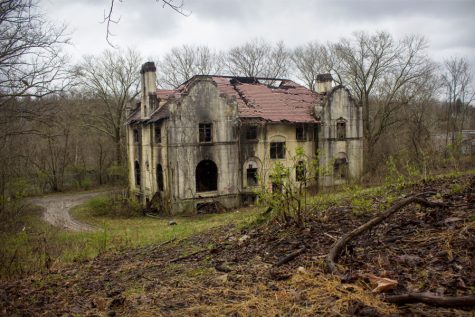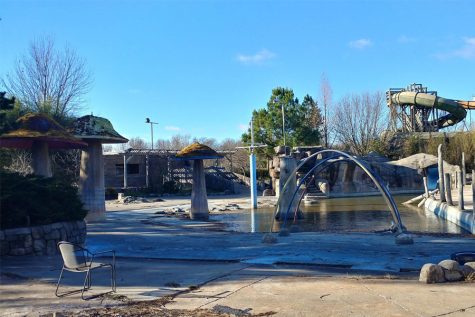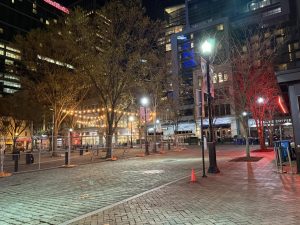Urbex attracts photographers to document past
Curious explorers visit abandoned, man-made structures
March 26, 2019
Rule No. 1 of urban exploration: leave nothing but footprints. Do no damage, move no object and vandalize no surface.
Rule No. 2: Never share the location of your abandoned site visits. Sharing with other well-intentioned urban explorers is generally okay. Film your entry point to prove there was no breaking and entering, but never share the footage.
Rule No. 3: Always have a way to defend yourself. Some carry pepper spray, some carry a pocket knife. This is solely in the event of running into drug dealers, scrappers, gang members, or squatters. Never carry a firearm; trespassing with one is considered a felony is some states.
These are the guidelines Kiley Lyon, of Quads City, Iowa, has come to learn since he first started urban exploring at 13 years old. Now 46, he estimates to have visited over 1,000 locations all over the world.
“Sometimes what we do is on the fringe of unacceptable,” Lyon said, “but we’re not there to damage anything.”

Richey visited this abandoned cement plant in 2017, calling it an “industrial wasteland.” Some features on the plant’s massive property included 12 silos– each 70 to 80 feet high.
Urban exploration, or urbex, comes in many forms. In its most basic definition, it is the exploration of abandoned man-made structures. Some just like to wander around. However, a large portion of this community brings a camera along.
Tyler Richey, senior SAEM major, also has a long resume of explores at just 22 years old. It began with finding an abandoned distillery on Google Earth in 2012, and led to later purchasing his own camera in 2016.
When he shoots, he mainly looks for the architecture along with graffiti, old signage or texture. The gold mine sites have old industrial equipment.
“I like to think one day was the last day that was used,” Richey said.
Specifically, to name a few, the last day of a telescope and lens factory, the last day of an old Westinghouse plant, or the last day the halls of an elementary school heard the pitter-patter of children’s feet.
Richey also has his own list of rules that he follows: let people know you’re going, how long you’ll be, and never go alone.
At face value, they’re a community of harmless photographers with reasonable parameters. The catch? Visiting a site is almost always trespassing.
“We do our best to gain permission,” Lyon said.
The best way is contacting the owner of the property and telling them their intentions, however some properties either have no ownership or are in the midst of a court battle for ownership. Another way is notifying local authorities to avoid the event of getting caught.
“I’ve been caught before,” Richey said. “It seems if you have a camera, that is a really good out.”
Lyon said he and his crew go out of their way to avoid bothering people, but police were called on them one time by a woman watching with binoculars from blocks away.
“The camera is damning,” Lyon said. “There’s proof on the camera that you were trespassing, but its proof you weren’t damaging anything.”
Lyon added that the police in that incident were “cool” with what they were doing and that many know what urban explorers are.

One of Lyon’s favorite sites is an abandoned waterpark in Missouri, particularly taking note of the concrete and stonework left behind within the park.
However, not everyone follows the aforementioned unspoken rules. Although these abandoned places are, according to Richey, “free shelter for bad people,” some within the urbex community cause unwanted rifts that could ruin it for the rest.
“You can tell [between] the people there for the location versus the attention,” Lyon said. He cited YouTubers as common perpetrators for what he calls “urbex theatre,” which includes faking what they found, such as fake blood or acting like they’re being chased, for the sake of views.
Others go in and move objects around while taking photos, or worse, damage the site itself or vandalize its walls. While Richey defends that graffiti writers are just looking for a great canvas, but Lyon is more of a “purist,” saying the graffiti “screws it up for any explorer who wants to see [the building] as it was.”
In a community this large and complex, it can be difficult to fully capture why they do what they do. Some go for the thrill of trespassing, some are graffiti writers just looking to put their art out into the world, and others just enjoy photography.
Richey said urban exploration tells “an American story” of industry’s roots that lead to the architectural strides made today. In a true explorer’s spirit, he does this for the same reason as Lyon: to document the past.
“When I see a place go like this, I see what it used to be in my head,” Lyon said. “I’m trying to make a connection between what it is now and what it was.”

















